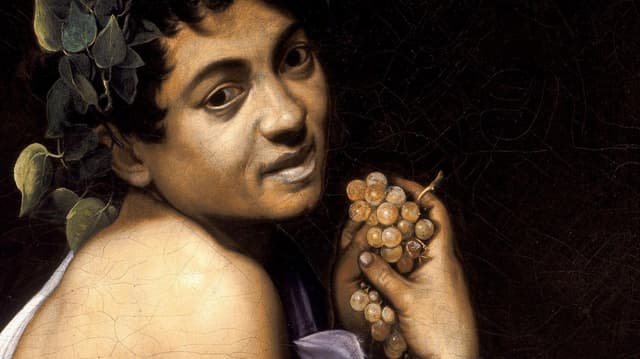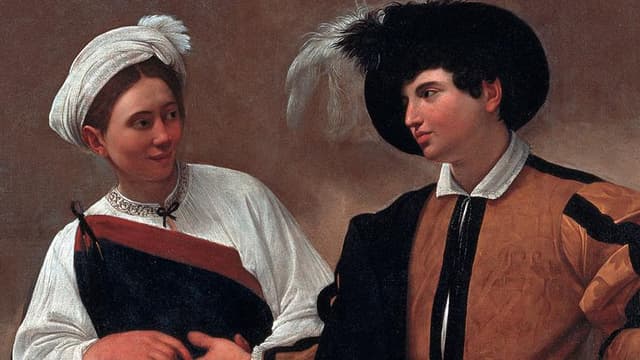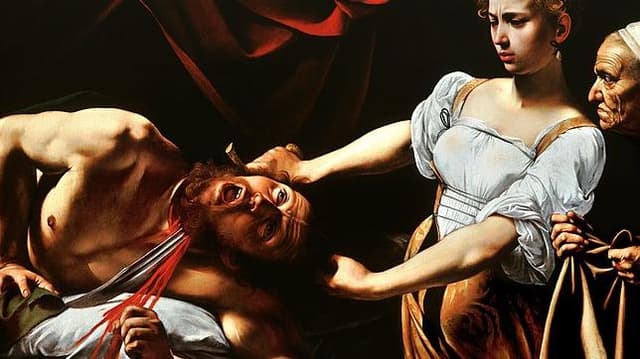Often called the "bad-boy of art history," Caravaggio was a tortured, brooding, and violent artist who gravitated to the underbelly of Roman society. He spent his time with prostitutes, pimps, and petty criminals, and they ended up immortalized in his paintings.
But Caravaggio captivates us not just because of the sinister aspects of his character, but because his art was every bit as dark, subversive, and revolutionary as his life was. He painted exactly what he saw, in a form of radical realism that had never been seen before. But those same paintings are also soulful, moving, and surprisingly reverent. Just like his chiaroscuro art, Caravaggio is full of contradictions, and of contrasts of light and dark. No other artist led such a mysterious and fascinating life and no other artist created such brutally honest paintings.
It was in Rome that Caravaggio spent the bulk of his productive years, and more of his works are here than in any other city in the world. It's the only place on earth where you can see six of his paintings absolutely free in churches, and dozens more in museums across town. If you too are a Caravaggio-chaser, or are ready to become one, follow this map to find every single one of his Roman paintings.

Borghese Gallery
@tiffanyparksrome
Marvel at the Sick Bacchus, a self-portrait Caravaggio made when he was languishing in a hospital at only 22. Admire the Madonna dei Palafrenieri, a painting that was meant to adorn an altar in St. Peter's Basilica but was rejected because of the Virgin Mary's scandalous cleavage and a too-old-to-be-naked Christ Child. Be seduced by the languorous and provocative Boy with a Basket of Fruit.
Thanks to the unscrupulous art-collecting methods of Scipione Borghese, this is the largest collection of Caravaggio works under one roof.
🖼️ Paintings here:
Boy with a Basket of Fruit (1593)
Sick Bacchus (1593-1594)
Saint Jerome Writing (1605)
Madonna dei Palafrenieri (1606)
Saint John the Baptist (1610)
David with the Head of Goliath (1610)
Note: Be sure to book your visit to the Borghese Gallery well in advance. Tickets sell out as far as 3-4 weeks in advance. If you're not having luck online, try calling instead. There are English-speaking operators and often there's more availability when calling. (+39 06 841 3979)

Details
Capitoline Museums
@tiffanyparksrome
The enticing and captivating Fortune Teller is alone worth the price of the admission ticket, but the Capitoline Museums offers so much more. In addition to another Caravaggio painting, St. John the Baptist, the museum also houses ancient bronze works such as the famous Capitoline She-Wolf, Hercules, the Thorn-puller, and the equestrian statue of Marcus Aurelius, incredible ancient marble sculptures like the Dying Gaul and Cupid and Psyche, innumerable paintings from the 1300s onward, intricate mosaic floors, Etruscan artifacts, and incredible views over the Roman Forum.
🖼️ Paintings here:
The Fortune Teller (1594)
Saint John the Baptist (1602)

Details
Palazzo Barberini
@tiffanyparksrome
Judith and Holofernes is one of Caravaggio's most arresting and shocking works—and that's saying a lot. This museum is a must-stop for Caravaggio-lovers, as it also houses his Narcissus and St. Francis in Meditation. The rest of the collection is equally impressive, particularly the ceiling fresco in the Grand Salon by Pietro da Cortona.
🖼️ Paintings here:
Judith Beheading Holofernes (1598)
Narcissus (1599)
Saint Francis in Meditation (1610)

Details
Pinacoteca Vaticana
@tiffanyparksrome
When visiting the Vatican Museums, ditch the crowds in their stampede toward the Sistine Chapel and take a detour to the Pinacoteca (picture gallery) instead. This surprisingly quiet and uncrowded area of the museums boasts one of the most powerful and tragic works by Caravaggio, The Entombment of Christ.
The work is full of emotion and depth, and is considered the pinnacle of Caravaggio's mature period.
🖼️ Paintings here:
The Entombment of Christ (1603)
Note: Tickets to the Vatican must be booked well in advance. In high season they may sell out entirely which will force many visitors to purchase tickets from 3rd-party sellers or buy tours. If buying a tour, be sure it includes a visit to the Pinacoteca.

Details




